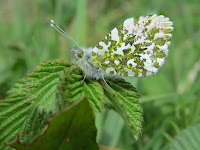Today we had two morning trips booked in the water park, so I took the opportunity to get out at first light to check on an area that is good for Otters.
Certainly well worth getting up for as within ten minutes of arriving an Otter swim along the far side of the lake and climbed out and ran along the bank giving some excellent views, with Kingfisher and Cormorant fishing on the lake this turned out to be a worth while detour.
Tour one (DT)
I decided to run the tour around a couple of the larger lakes as there had been an influx of waterfowl. Whilst walking along the footpath several small birds flew into the top of the tree line, there was a mix of Reed buntings and Goldcrest as well as a couple of Redwing.
First scan down the lake we could see a lot of birds that seemed to be in the middle area of the lake so decided to move onto a better view point.
Scanning the lake we soon found several Great crested grebes fishing in groups as they chased the fish into the shallows, as normal they were being harassed by Black-headed gulls looking for an easy meal.
There was a nice mix of duck on the lake with several Wigeon, Gadwall, Mallard, smaller numbers of Pochard, Red crested pochard, well over 75 Mute swan and a male Goldeneye.
Further down the lake we could see a few more Grebe and on closer inspection these turned out to be Red-necked grebes a fine bird to see at close range on an inland lake, in total four birds were found.
A quick stop at one of the hides produced a Water rail working its way around the edge of the reed bed, and two Sparrowhawks whizzed over the water to near by trees.
On the walk back several groups of Redwing and Fieldfare could be seen and heard flying over head with a few Skylark mixed in, also a Little egret flew from the far bank and 50+ Lapwing dropped down onto the far island. other birds seen included Bullfinch, both Green and Great spotted Woodpeckers and a single Stonechat.
 |
| female stonechat |
Tour two (NA)
Even in the car park where we started our tour the bushes were alive with birds, it took us 15 minutes to get to the road. The stars were a flock of c30 siskin that were roaring around the trees and occasionally landing long enough for us to see them through the telescope. Other birds seen at this stage included long-tailed tit, treecreeper, blue tit, chaffinch, great tit, robin and wren.
We headed down a quiet lane and were quickly looking at a flock of 13 red-crested pochard sitting in the middle of the lake, we managed to find a pair of tufted duck feeding quietly at the back of the lake.
We carried on down the lane seeing and hearing more robin and wrens, as well as blackbird and song thrush.
 |
| Robin |
We then reached a point where we crossed the river on a footbridge and started to see many small birds again. Lots more long-tailed tit, several goldcrest, fieldfare and redwing were all over the place. We then heard a rabbit squealing, which can pretty much mean one thing, its being attacked by a stoat - and so it proved to be. Nature at its rawest.
We carried on and had some great views of redwing, song thrush and dunnock. At the next lake we saw a distant great crested grebe, more tufted duck and a fair few coot. There were also a few black-headed gulls in their confusing white-headed winter plumage.
The next lake had loads of duck on it, new species for us included gadwall, shoveler and wigeon.
The next lake had great views of cormorant sat in a tree roost with their wings out drying. There were also a number of pochard feeding and sleeping here.
All in all a very enjoyable trip!
After meeting up to discuss our tours we decided to head out to a disused airfield to see what was about.
A rather good decision as we had fantastic views of a kestrel and merlin hunting over the area along with a wonderful sunset.
 |
| Male merlin having a wash |
Another great day out in the countryside DT/NA





































